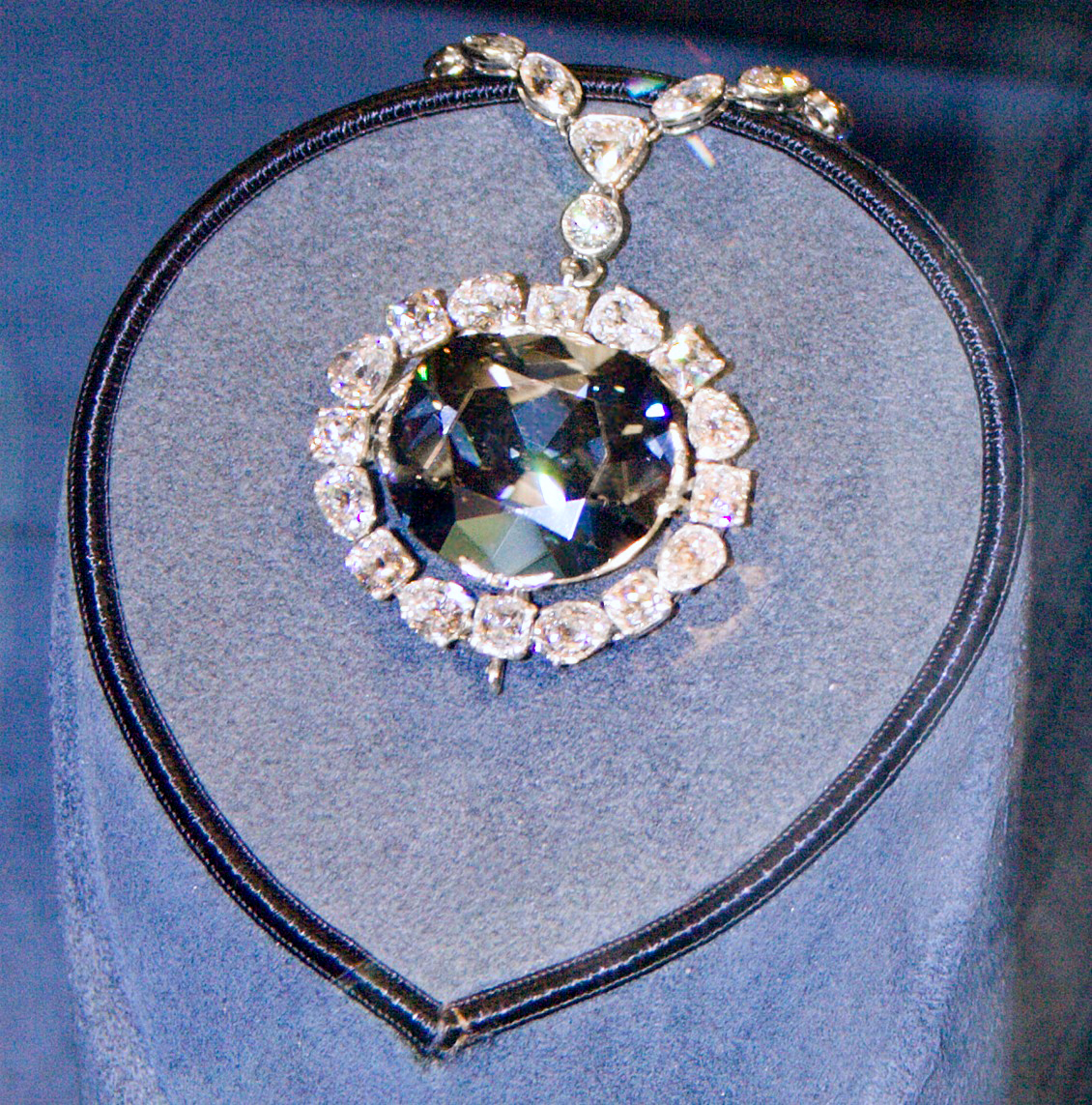Smithsonian National Museum of Natural History: Hope you can see the Hope Diamond! See 10, 826 traveler reviews, 6, 341 candid photos, and great deals for Washington DC, DC, at TripAdvisor. Hidden Expedition: Smithsonian Hope Diamond probably is the best work from Eipix in terms of the artwork. The visuals are not fantasy kind of awesome but they are beautifully real. All of the scenes are high in details and are stunning to look at. See 208 photos and 11 tips from 3363 visitors to Hope Diamond Exhibit. Whoever comes in direct contact with the stone is cursed for life! hope diamond exhibit washington hope diamond washington hope diamond smithsonians national museum of natural history washington hope diamond smithsonian's national museum of natural. THE SMITHSONIAN The Smithsonian Institution is the worlds largest museum and research complex. including such worldfamous gems as the Hope diamond, Logan sapphire, and Rosser Reeves star ruby, along with countless thousands of lessfamous but equally spectacular gem and mineral specimens. The Smithsonian Gem and Mineral Collection. Smithsonian mineralogist George Switzer is credited with persuading jeweler Harry Winston to donate the Hope Diamond for a proposed national gem collection to. Claire Mitchell FGA DGA talks to Dr Jeffrey Post, chairman of the Department of Mineral Sciences and curator of the National Gem and Mineral Collection at the Smithsonian Institution, about advanced gem testing, the Hope diamond and the importance of donations to the museum. The Hope Diamond is a lustrous blue gem weighing 45. It is about the size of a walnut. Credit: Smithsonian Institution. Diamonds have fascinated mankind for centuries, and it's not. Bejewel Like an Heiress: Renowned for its nearly flawless clarity, rare deep blue color and eventful history, this regal and versatile Hope Diamond PinPendant is an exquisite adaptation of the original, donated to the Smithsonian in 1958 by jeweler Harry Winston. Considering the fate that befell some of the Hope Diamond's owners, it is perhaps best that the Smithsonian Museum currently possesses it. Parade reported that famed jeweler Harry Winston acquired the stone in 1949, along with others in McLean's collection, after her death. Winston donated the Hope diamond to the Smithsonian Institution in 1958 to be the focal point of a newly established gem collection as well as to inspire others to donate. On November 10, 1958, the Hope diamond traveled in a plain brown box, by registered mail, and was met by a large group of people at the Smithsonian who celebrated its arrival. Photo courtesy of the National Postal Museum, Smithsonian Institution This paper, which covered the package containing the Hope Diamond, is part of the collection of the National Postal Museum in Washington, D. The Hope diamond has left the Smithsonian only four times since it was donated. In 1962 it was exhibited for a month at the Louvre in Paris, France, as part of an exhibit entitled Ten Centuries of French Jewelry. In 1965 the Hope diamond traveled to South Africa where it was exhibited at the Rand Easter Show in Johannesburg. Were thankful for all the activity in Affiliateland this month. Two Affiliates are loaning objects to The Sweat of their Face: Portraying American Workers exhibition at the Smithsonian. The Lowell National Historical ParkLowell National Historical Park Join me, ManicMeeks, as I make my way through Hidden Expedition: Smithsonian Hope Diamond! After we escaped from the train, we now have to make our way through the forest. Hidden Expedition: Smithsonian Hope Diamond Walkthrough features detailed stepbystep instructions, custom marked screenshots, and simple puzzle solutions to help you track down the mysterious and priceless Hope Diamond. The Hope Diamond, the worlds most famous diamond, began another chapter in its already illustrious history. For the first time the diamond is on display at the Smithsonians National Museum of Natural History in a setting other than its historic Cartierdesigned setting. On November 10, 1958, they donated the Hope diamond to the Smithsonian Institution, and almost immediately the great blue stone became its premier attraction. The Hope diamond has left the Smithsonian only four times since it was donated. In conjunction with the National Museum of Natural History and the Smithsonians curator of the National Gem and Mineral Collection Jeff Post, as well as game developer Eipix, Big Fish has incorporated the facts and legends behind the Smithsonians iconic Hope Diamond into this exciting hidden object adventure game. Witness the Hope Diamond's epic journey, spanning eons, crossing three continents, and passing from kings to thieves to millionaires and into the halls of the Smithsonian. Beautiful and dangerous, with a lurid past as stormy as the queens who once wore it, the Hope diamond at the Smithsonians Museum of Natural History is almost a compulsory stop on the family visit to Washington D. The Smithsonian Institution ( s m s o n i n smithSOHneen), established on August 10, 1846 for the increase and diffusion of knowledge, is a group of museums and research centers administered by the Government of the United States. The Smithsonian National Museum of Natural History in Washington, D. , houses more than 125 million natural science specimens and cultural artifacts. The Hope Diamond is on display at the museum. It is the largest blue diamond in the world, weighing 45. The Hope Diamond is a rare blue diamond weighing 45. 52 carats, and it is considered one of the most famous diamonds in the world. Credit: The Smithsonian It is commonly believed that the diamond was once part of the Tavernier Diamond, a famous blue diamond weighing 112 carats, which was named after the French trader who brought it from India to. The Hope Diamond is on permanent display in the Smithsonian Institution. The gem apparently originated in India, in the Kollur mine, in the Guntur district of Andhra Pradesh (which at the time had been part of the Golconda kingdom), in the seventeenth century. Several months ago, the Hope Diamond was taken from the National Museum of Natural History for an overnight stay in the mineralogy lab. 52 carats, the Hope Diamond is. In the pendant surrounding the Hope diamond are 16 white diamonds, both pearshapes and cushion cuts. A bail is soldered to the pendant where Mrs. McLean would often attach other diamonds including the McLean diamond and the Star of the East. The necklace chain contains 45 white diamonds. 52 sparkling, steely blue carats make it the most famous diamond in the world shrouded in mystery and intrigue since it was pulled out of the ground in 17thcentury. Ways to Watch; Watch Videos; View Images; More Smithsonian; Embark on an epic journey of Hope. The legend is as massive and multifaceted as the gem itself, spanning one billion years, three continents and leaving a trail of intrigue, envy and death. Word got out in 1958 that Harry Winston was donating the Hope Diamond to the Smithsonian. There was speculation as to how it would be sent. The Hope Diamond is renowned for its rare color and rich history. Learn more about this remarkable stone at the Smithsonians Hope Diamond website. Search Field: Search Submit: Search Item The biggest totally free game fix trainer library online for PC Games. Legend has it that the infamous Hope diamond brings misfortune to whoever owns it. Well, the Smithsonian National Museum of Natural History added the magnificent skyblue gemstone to its. Hidden Exepedition: Smithsonian Hope Diamond is point and click adventure game with hidden object game mechanic. I was the art director and co designer on the project with a all star team. Here is a collection of concepts, designs and finished art I created to set the style and tone of the game. In this exciting continuation of the Hidden Expedition series, your journey takes you from the Smithsonian Institutions iconic castle to the remotest jungle as you track down the missing shards and learn the Hope Diamonds secrets. The package containing the Hope Diamond is presented to Smithsonian Secretary Dr. The donor, Harry Winston, shipped the diamond through the regular United States Postal Service via firstclass mail; the postage cost him 2. The Hope Diamond revealed The Smithsonian Institution in Washington displays the Hope Diamond without a setting for the first time in history Glenn Osten Anderson, theguardian. As visitors to the Smithsonians Natural History Museum know, the Hope Diamond is still on display at that museum today. And while that museum got to keep the diamond, the National Postal Museum is home to the unique package wrapper (above) used to bring it to the Smithsonian. Jeweler Harry Winston donated the famous Hope Diamondthe largestknown deep blue diamond in the worldto the Smithsonian Institution in 1958. Complete Hidden Expedition: Smithsonian Hope Diamond Walkthrough Strategy Guide. Overview of full game with annotated screenshots from actual gameplay. As the newest Hidden Expedition recruit, you'll need to find the shards of the precious Smithsonian Hope Diamond before a band of thieves do. Hidden Expedition: Smithsonian Hope Diamond Walkthrough Chapter Two: Castle Expedition features detailed stepbystep instructions, custom marked screenshots, and simple puzzle solutions to help you track down the mysterious and priceless Hope Diamond. Find great deals on eBay for hope diamond smithsonian. Smithsonian National Museum of Natural History: The Hope Diamond See 10, 754 traveler reviews, 6, 226 candid photos, and great deals for Washington DC, DC, at TripAdvisor. Hidden Expedition 6: Smithsonian Hope Diamond Final. In 1958, Harry Winston donated the Hope Diamond to the Smithsonian Institutes National Museum of Natural History, where it has remained ever since. Its display and setting have changed a few times over the years, but it is still the museums most popular piece. Highlights include the Hope Diamond, the National Gem Collection, the Mine and Rocks Galleries, the Plate Tectonics Gallery and the Moon, Meteorites and the. Over 100 million visitors have experienced the beauty of the Hope Diamond since Harry Winston donated it to the Smithsonian Institution in 1958. 10 Victims of the Hope Diamond Curse. Smithsonian Institution Archives, James Todd, the mailman who delivered the diamond to the Smithsonian, apparently had.











